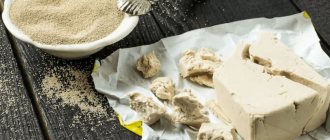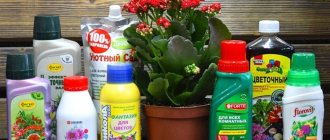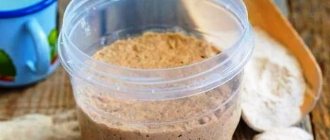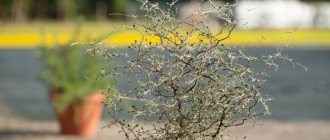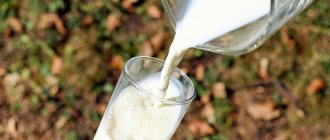For village residents who have a cow, using whey in the garden is common practice. The unique product obtained after milk processing contains an abundance of valuable components. Among other things, whey contains amino acids, minerals, vitamins, proteins, and fats. In addition, a huge number of lactic acid bacteria “live” in it, which promote the growth of vegetable crops and help fight pests. Let's learn in detail how to use whey in the garden for vegetable crops.
How to make whey
By saturating tomatoes, cucumbers, strawberries and plants with the microelements that make up the fermented milk product using whey, you can get a good harvest of high-quality fruits. You can buy whey in the store or make it yourself using milk.
Whey recipe:
- add a little of any fermented milk product to the milk and leave to sour in a warm place;
- Place the sour milk in a saucepan over low heat and heat so that it does not boil;
- after some time, the sour milk will separate into curd mass and liquid;
- Remove the pan from the heat and strain the liquid through cheesecloth.
Approximately 600 ml of whey will be obtained from 1 liter of milk.
Properties
It is necessary to strictly monitor the health of plants, constantly feed vegetable crops with fertilizers, one part of which consists of chemicals, and the other of organic substances. For this, whatever is at hand is suitable: mustard, yeast, tobacco ash, and whey. This dairy product has recently become very popular among vegetable growers due to its universal properties, availability and safety, as well as efficiency.
The beneficial properties of whey have been known for a long time. It is valued for its quality and ease of obtaining. Whey is produced from milk by fermentation. It is a by-product of the production of cheeses and cottage cheese. It appears when casein coagulates under the influence of its own waste products of microorganisms or by adding acid or rennet enzymes.
The serum has excellent hydrating properties, replenishes the loss of essential substances and elements caused by dehydration or other negative influences, and contains macro- and microelements involved in metabolic processes. It also has a positive effect on the plant in different phases of the growing season, in this particular case – on vegetable plants in the form of tomatoes and cucumbers.
Whey contains vitamins, minerals, animal protein, as well as lactose, sugars and amino acids. The latter play an important role in the life cycle of plants. They replenish the loss of nitrogen, phosphorus and potassium, which contribute to the development and formation of plant structure.
Among other things, whey contains traces of fat, and also helps to break down and destroy harmful bacteria, which makes it an indispensable product for the treatment of various diseases. Whey consists of globular proteins containing milk plasma proteins that have good bioavailability. The content of protein per hundred grams of the product is 0.846 grams, fats – 0.36 grams, carbohydrates – 5.14 grams and calcium – 47 milligrams, replenishing the supply of nutrients in the plant body. Such properties make the serum an indispensable assistant in the garden for the treatment of fungal infections of plants.
Application of serum for plants
Whey is not used in its pure form. Solutions are prepared from it, the concentration of which depends on whether they will be used for watering or spraying plants:
- water the plants with a solution prepared from fermented milk product and water (1:10);
- To spray the leaves, a more concentrated whey solution is prepared (1 liter of product is diluted in 3 liters of water).
Attention! Whey acidifies the soil, so for root feeding it should be used with caution so as not to acidify the soil.
Insect protection
Insects love the serum, so it is used to make traps. Pour undiluted product into a small container by a third and leave it in the beds overnight. In the morning, the insects caught in the trap are destroyed.
The product will get rid of the following insects:
- aphid;
- onion fly;
- cruciferous flea beetle;
- caterpillars;
- codling moth.
How to treat tomatoes with whey
Tomatoes need not only feeding, but also protection from various diseases. Most often, the crop is affected by late blight, from which whey will help protect. After spraying the bushes with a solution, a film forms on the leaves, which will prevent fungi from developing and penetrating into the plant itself.
You will be interested to know: Watering and spraying plants with iodine against diseases, using iodine in the garden as fertilizer
The first foliar treatment of tomatoes can be carried out two weeks after planting the seedlings. Since the serum film will not last long on the foliage, spraying is repeated every 10 days. It is also recommended to process tomatoes in open ground after rains.
To treat tomatoes with whey on the leaves, use a solution of a liter of water and a liter of fermented milk product.
Horse feeding with tomato whey solution is carried out according to the following schedule:
- The first time you can apply fertilizer to the soil 12-14 days after planting the seedlings.
- The second feeding is carried out two weeks after the first.
- The tomatoes are watered the third time during flowering.
This root feeding will help tomatoes develop well and increase yield.
Interaction with other fertilizers
Whey as a fertilizer interacts well with mineral complex mixtures, as well as organic substances - ash, green infusion of green manure, a complex of microelements, compost or humus.
When mineral components are added to the soil, bacteria help convert them into a form convenient for absorption, passing them through their digestive tract. The result is chelated forms of micro and macroelements.
When adding whey to feed plants in an infusion of green manure, fermentation occurs faster, and nutrients enter the soil in a semi-decomposed form.
The use of whey in the garden as a means of restoring microflora leads to the proliferation of bacteria and the rapid decomposition of plant residues. This in turn leads to an increase in the amount of humic acids - the main factor of fertility.
Serum with iodine against late blight and powdery mildew
Iodine not only helps fight diseases, but also promotes fruit ripening. Therefore, experienced gardeners recommend using the following recipe to protect tomatoes and potatoes from late blight, and cucumbers from powdery mildew:
- add 1 liter of whey to 9 liters of settled warm water;
- add 20 drops of iodine to the resulting mixture;
- mix everything well and strain.
This solution will protect plants from diseases, help them better adapt to temperature changes and increase immunity.
Reviews
Valentina, Zhukovsky: “Whey is an indispensable product in the country. Store-bought milk is of little use; I use natural milk from village milk. This serum contains many valuable microelements for plants.”
Artem, Krasnodar: “Tomatoes and cucumbers grow well on whey. I use it to feed plants at the roots. I dilute the product with water in a ratio of 1:8.”
Natalya, Ufa: “The serum helped get rid of aphids in just 2 sprays. There was a break of 10 days between procedures. Iodine was added to the solution. The pests left the site, but the plants themselves were not damaged.”
Prevention and treatment of powdery mildew
Roses and cucumbers are often affected by powdery mildew, which an infusion of whey and ash can help get rid of. It is effective only for prevention and at the initial stage of the disease.
Recipe:
- Pour a glass of ash into a saucepan with three liters of boiling water, bring to a boil, cover with a lid and put in a dark place.
- After 7 days, strain the infusion and add 3 liters of whey and water.
The finished ash-whey infusion is used for spraying the above-ground parts of plants.
Tasks
Timely and competent treatment with correctly selected preparations is a guarantee that roses will delight with their decorative properties all season long, despite their whimsicality and capriciousness. What it ultimately provides:
- abundant and long flowering;
- stimulation of root system growth;
- resistance to adverse environmental conditions;
- prevention of diseases and pests;
- increased cell membrane permeability;
- suppression of pathogenic microflora.
Processing is carried out mainly in two ways. External, leaf spraying of roses with nutritious and therapeutic-and-prophylactic solutions and root application of fertilizers.
Using whey in a greenhouse
Since the greenhouse has high humidity and air temperature, this should be taken into account and the whey solution should be used carefully to process tomatoes and cucumbers:
- for watering, use only a warm solution within +20 degrees;
- Before using the serum, the soil must be watered, since fertilizing on dry soil can burn the roots;
- Feeding should be done early in the morning or in the evening;
- The greenhouse should be ventilated regularly.
Using a whey solution, you can feed and protect cucumbers, tomatoes, root vegetables, melons, onions, flowers, and fruit trees from diseases. But for eggplants and peppers, it is not recommended to use fermented milk product.
Deadlines
in spring
In terms of timing, spring processing of roses is considered the most basic and important. It is carried out in several stages.
- First
In April, early spring treatment with complex fertilizer (application at the root) is carried out. This should be done immediately after removing the shelter after winter, as soon as frosts stop bothering you at night.
- Second
It is also useful to use organic matter (manure or compost) in early spring - about a week after the first feeding. During this period, you can spray rose bushes for disease prevention with a fungicidal-insecticidal solution.
- Third
In late spring (May), the third feeding is carried out, during the swelling of the buds and the active growth of new shoots. Mineral fertilizer is applied under the root, and the bushes are sprayed externally with insecticide and fungicide (with a difference of 2 weeks or by mixing two preparations).
In summer
In June, immediately after the buds open, the bushes need to be fed again with mineral fertilizer so that the plant has enough strength and nutrients to bloom flawlessly all season. Some gardeners claim that if the spring treatment has been carried out in full, nothing more needs to be done either in July or August. Others still play it safe and in the middle of summer use some complex universal store-bought mixture like “Fertika Universal”, and about 2 weeks before the beginning of autumn - potassium sulfate and superphosphate. But this is a purely individual matter and depends on the condition of the plants.
In summer, unscheduled treatment of rose bushes with fungicides and insecticides is also possible. It is carried out if a fungal infection has spread in the garden or there is an invasion of pests. Even if other crops are affected, all plants are sprayed as a preventive measure. There are drugs designed specifically to treat a specific disease (powdery mildew, for example, or black spot). You can use universal solutions: Previkur Energy and Profit Gold (for infections), Fitovera and Aktara (for insects).
Dosages and frequency must comply with the instructions in the instructions for the drug used.
in autumn
During this period, the main thing is to prepare rose bushes for winter, which they tolerate extremely poorly. In addition to good shelter, the plants need to be properly fed, since all reserves are depleted over the summer. The most commonly used are superphosphate, potassium salt and ash. It is better to introduce them into the root zone and treat the tree trunk circle. This is done in September.
Later, when the leaves fly around, before covering (in October), it is useful to spray the plants with a fungicide and an insecticide (with a difference of 2 weeks or mixing two preparations). This will protect against an outbreak of infections in the spring.
Approximate schedule of fertilizing and treating roses according to timing:
Correct processing
The thing is that whey contains a large number of bacteria, which, together with a certain alkaline level of the plant, form unique protective properties.
Prevention
It is also possible to treat agricultural crops for the purpose of prevention, because we all know that it is better to prevent diseases than to treat them. This fact applies quite well to garden crops.
Many gardeners note the fact that preventive measures have a much better effect on the plant than the treatment process itself.
Cucumbers need to be processed immediately after flowering begins. It is best to use a specialized sprayer for these purposes.
- It is best to spray crops at the moment when the active process of foliage formation begins.
- It is important to be careful during flowering, because the protective film can slightly complicate the process of flower formation and their further development. That is why experts recommend fertilizing or treating crops after flowering has formed.
- All activities are carried out during the daytime, several days before watering. This is done to prevent water from washing away all the nutrients from the surface.

